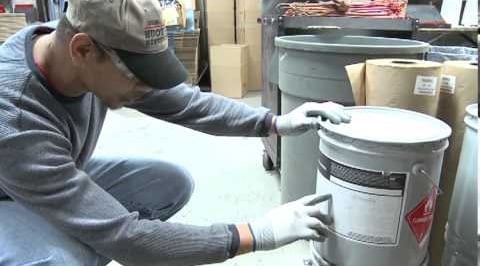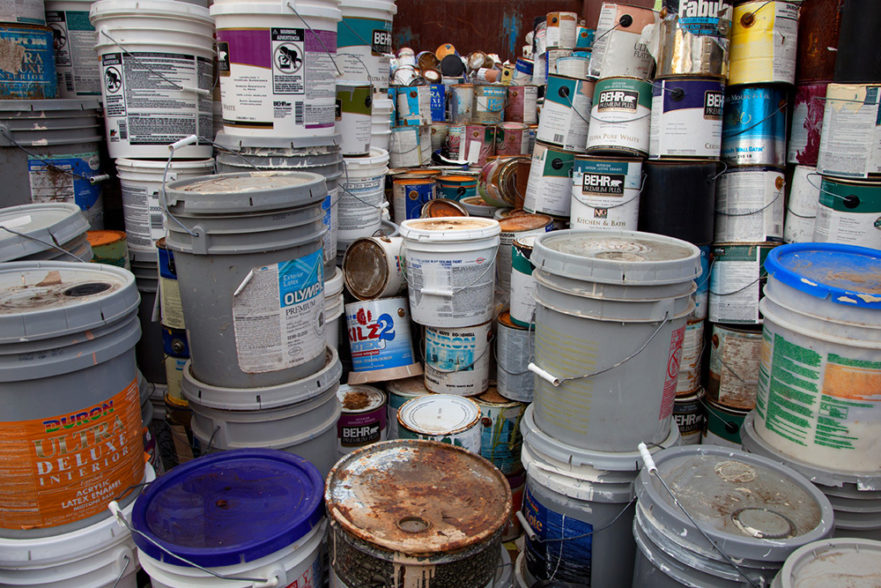
The news has been full of hazardous waste disposal settlements and accusations regarding improper handling and disposal of waste and materials. In California alone, two companies, Sims Group USA, and AT&T have both recently agreed to huge settlements as a result of hazardous waste disposal investigations.
The handling and disposal of hazardous waste is heavily legislated in Canada, and is of significant interest to Canadian businesses. Here’s an overview of the top 5 things you need to know about hazardous waste legislation in Canada:
- In Canada, all three levels of government are involved with environmental protection and management of hazardous wastes. This means that you may be affected by all levels of government. Here is a breakdown of jurisdiction:
- Municipal governments establish collection, recycling and disposal programs within their jurisdictions.
- Provincial and territorial governments establish criteria for licensing hazardous-waste generators, carriers and treatment facilities. They also control movements of hazardous waste within their jurisdictions.
- The Federal Government regulates transboundary movements of hazardous wastes and recyclable materials.
- The Canadian Environmental Protection Act, 1999 (CEPA) is the legislative act that regulates management of hazardous waste recycling and disposal. CEPA was enacted to prevent pollution and protect the environment and human health by contributing to sustainable development. According to Environment Canada, CEPA:
- makes pollution prevention the cornerstone of national efforts to reduce toxic substances in the environment;
- sets out processes to assess the risks to the environment and human health posed by substances in commerce;
- imposes time frames for managing toxic substances;
- provides a wide range of tools to manage toxic substances, other pollution and wastes;
- ensures the most harmful substances are phased out or not released into the environment in any measurable quantity;
- includes provisions to regulate vehicle, engine and equipment emissions;
- strengthens enforcement of the Act and its regulations;
- encourages greater citizen input into decision-making; and
- allows for more effective cooperation and partnership with other governments and Aboriginal peoples.
- So what are hazardous wastes?
The definition of a hazardous waste was set out by CEPA and includes residues from industrial productions including solvents, acids and bases, as well as residuals from oil refining and chemical/metal processing. Household hazardous wastes include items such as car batteries or oil based paints.
Hazardous wastes take many forms such as solid, liquid, gas, sludge or paste and are categorized into different classes. - There are 9 different classes of hazardous waste, each with its own unique set of criteria. Environment Canada has defined each class of waste here. The class categories are:
Class 1: ExplosivesClass 2: GasesClass 3: Flammable LiquidsClass 4: Flammable Solids; Substances Liable to Spontaneous Combustion;Substances That, on Contact with Water, Emit Flammable Gases (Water-Reactive Substances)Class 5: Oxidizing Substances and Organic PeroxidesClass 6: Toxic and Infectious SubstancesClass 7: Radioactive Materials Class 8: CorrosivesClass 9: Miscellaneous Products, Substances or Organisms
- Export and imports of hazardous waste and hazardous recyclable materials are regulated under the Export and Import of Hazardous Waste and Hazardous Recyclable Material Regulations (EIHWHRMR) as part of CEPA 1999. These regulations ensure all materials transported across international borders are managed properly to protect the environment and human health
This act only affects those who are involved in import, export or transit of hazardous wastes or hazardous recyclable materials.
Learn more about CEPA 1999 and EIHWHRMR by visiting Environment Canada.
Contact Maratek to learn about our Hazardous Waste Disposal Services.
Learn More About Our
Hazardous Waste Disposal Services
Maratek Environmental Inc. has proudly served industrial manufacturers who produce hazardous chemical waste and solvent waste such as printing, photofinishing, silver and paint related manufacturers for over 40 years.
Maratek corporate offices are located in Bolton, Ontario; about 15 minutes north of Toronto. Maratek Environmental Inc. 60 Healey Road Unit 8-10 Bolton, ON L7E 5A5 Phone: 905.857.2738 Fax: 905.857.2764 Toll Free: 1.800.667.6272
Sources:
Environment Canada
A Guide to Understanding the CEPA Act, 1999
Export and Import of Hazardous Waste and Hazardous Recyclable Material Regulations
Guide to Classification
Management of hazardous wastes and hazardous recyclable materials in Canada
The Canadian Environmental Protection Act, 1999 and Hazardous Waste and Hazardous Recyclable Materials

